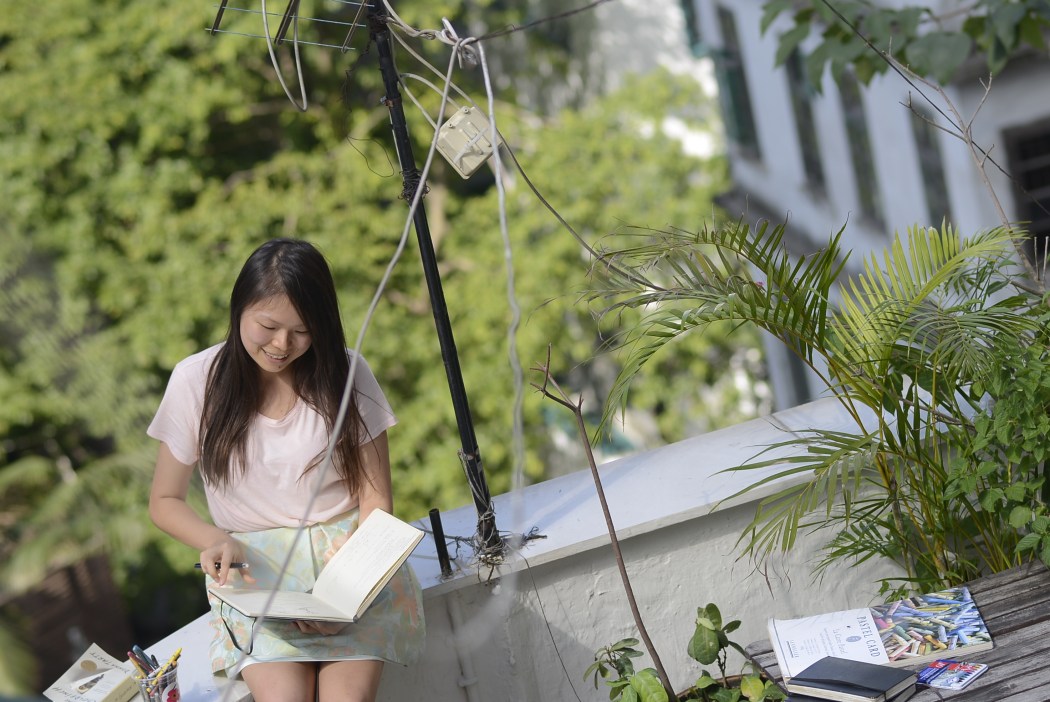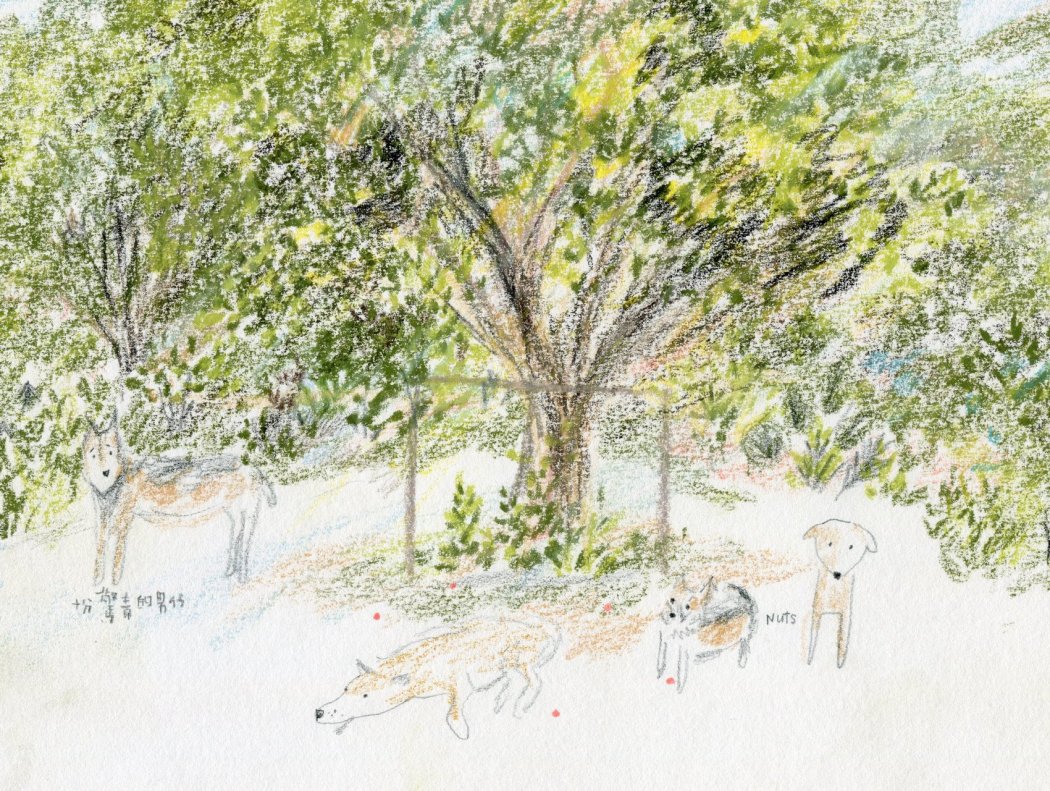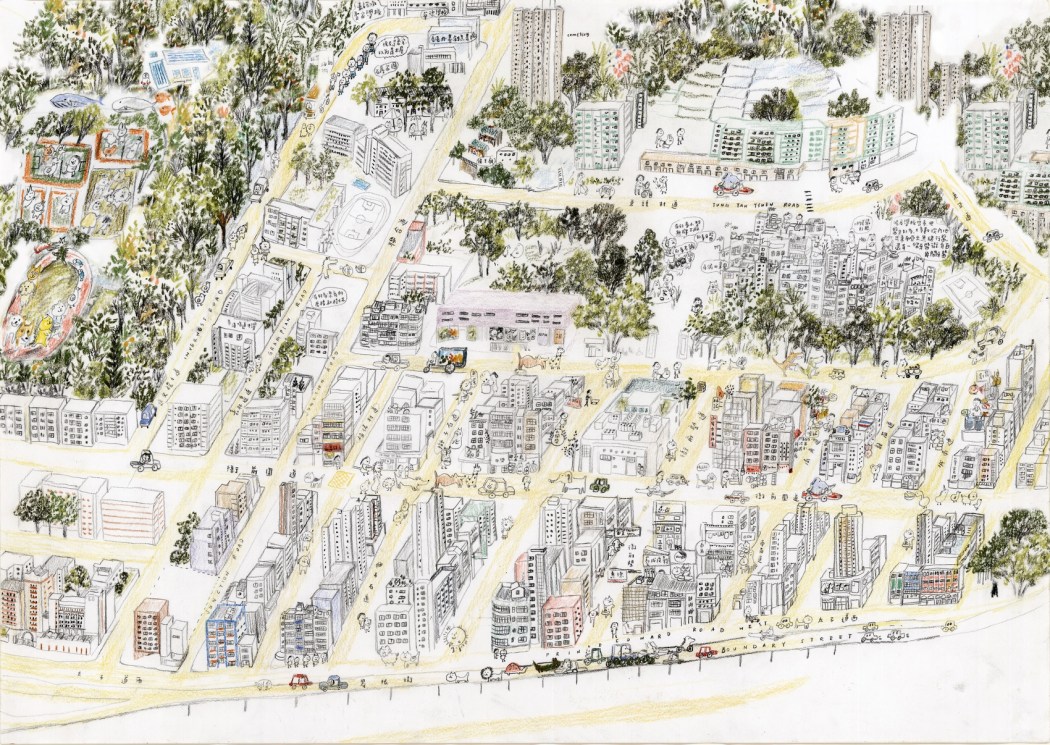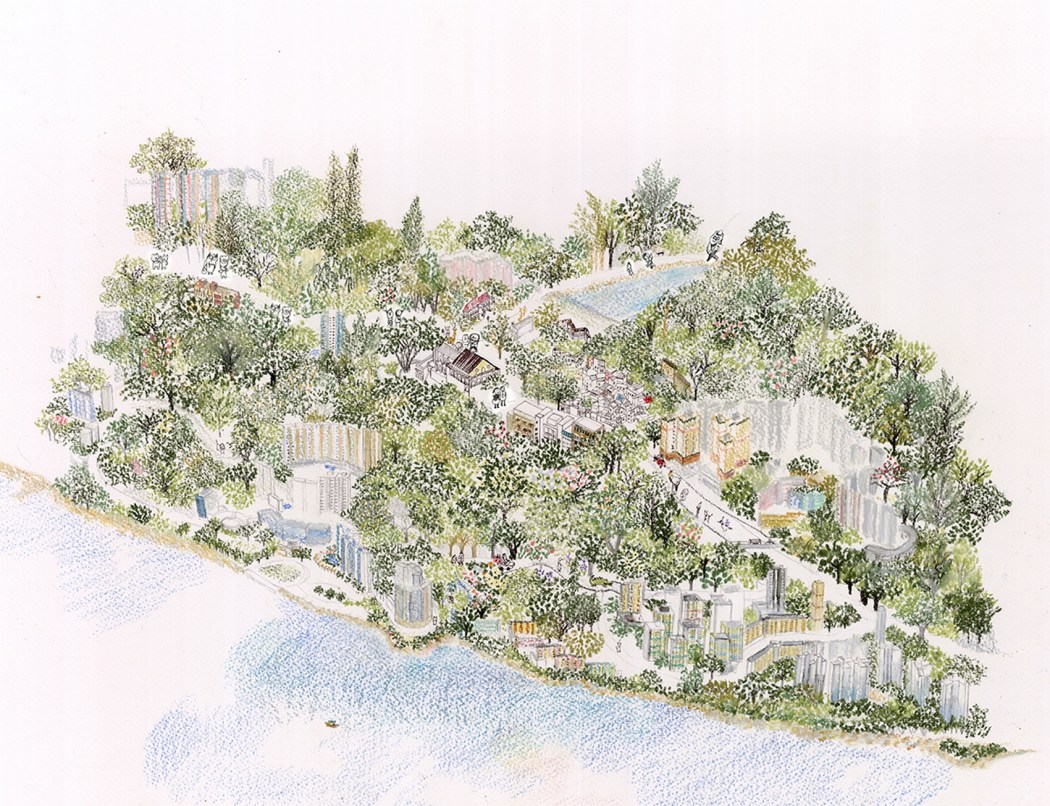Observant Hongkongers might have noticed subtle shifts in the city’s natural rhythms recently. The insects have awakened, the ocean has shed bioluminescent “blue tears” along the shoreline, and the trees have begun to bloom.
None of these phenomena have escaped the attention of artist and writer Maoshan Connie, who is nothing if not observant.

“Did you see the clouds yesterday?” she asks, sitting in the shadow of a big banyan tree in a quiet corner in Sheung Wan.
Dramatic, grayscale waves had formed above parts of Kowloon and the New Territories, although only those who looked away from their screens would have been rewarded with the view.
“It was a type of cloud called Asperitas,” Connie explains, a “new” and rather rare formation that was only added to the World Meteorological Organization’s International Cloud Atlas in 2017.
‘People don’t even see the trees’
Since 2015, Connie has been encouraging Hongkongers to look up and look around through a campaign called Dear Tree, which invites people to write a letter to their favourite tree for her to draw.
“What inspired me was this news from Melbourne, in Australia, where they gave every single tree a number and email address,” Connie explains. The idea was that local residents could let the city council know if a tree was damaged or needed attending to. “In the end, they got thousands of love letters.”

Connie liked the idea, “but I thought that if I did it in Hong Kong absolutely nobody would write because, you know, Hong Kong is Hong Kong – people don’t even see the trees.”
However, with a little encouragement from her friends, she set up a Dear Tree Facebook page. To her surprise, letters began rolling in, and while much has changed in the seven years since she became a “postman,” the letters keep coming.
“We really welcome people to write a simple letter to a tree… it doesn’t have to be long – and I will draw the tree,” Connie says.

“A lot of people think that I write and I draw but that’s not true. We receive letters.” Recently, two came from Tai Po. She had drawn an illustrated map of the district “and that’s how they knew [about] me or my page,” she says.
“You know, every district has its own identity or character. And Tai Po people really love their district.”
Hong Kong stories
Born in Hong Kong, Connie lived “a little bit everywhere” before returning to the city some 15 years ago. Although now a full-time writer and illustrator, her first “real job” was in architectural conservation, all the while freelancing as an illustrator on the side. Her role involved a lot of research, “Hong Kong history and stuff like that,” during which she became aware of gaps in her knowledge.
“I started drawing maps because I realised that although I studied high school in Hong Kong, we never studied Hong Kong history,” she says. Unlike topographic maps or those from Google, Connie’s contain local historical anecdotes. “The good thing about Hong Kong is it does not have a very long history. But how it was built and all those early Hong Kong stories, I really love them.”

The maps Connie draws also show animals enjoying the city and, of course, plenty of trees.
“I think a lot of people, they don’t realise that trees are part of our lives… because Hong Kong people are just so busy with money and everything, especially before 2019,” Connie says, explaining that part of her hope with Dear Tree was to raise awareness of the city’s greenery.
But there was more to it.
“The whole ‘under concept’ was to make people know that they also have a say in urban planning,” she says. “But now it’s like: of course you have no say in urban planning, or anything.”

In the early days, the Dear Tree community was able to effect real change. “There were people who saw that the authorities were going to cut [down] trees and they didn’t know where to seek help, and they just randomly asked for help from us,” Connie says. “So the least we could do was share it, write about it, draw it, and raise publicity.”
Connie talks of “a few incidents that were quite special.” In one instance, a 50-year-old tree on Peng Chau was saved from the axe.
However, “after what happened in 2019, I think a lot of people lost faith that they could change the city,” Connie says, adding, “I think it affects me a bit too… it’s something that we haven’t fully processed.”
“I guess we just have to keep trying. Small changes are good, still.”
Community spirit
Community plays an important role in Dear Tree – and in Connie’s life. She spends a lot of her time at Mount Zero, an independent bookshop nestled at the end of a side alley in Sheung Wan. It is one of her favourite places to sit and draw, she says, and close to the tree she would write her love letter to.
Located in a corner of Blake Garden, a quiet neighbourhood park, Connie’s beloved banyan matures not upwards but across. “If you look at photos from the 1970s, this tree was very small,” she says. “The reason it is tilted, that it grows horizontally, is probably because of a typhoon. It collapsed, but nobody cleared it and it kept on growing. I thought this was such a nice story.”
It’s a story that resonates with Dear Tree, too. “I think for advocacy, it is very important for people to have a sense of hope that they can make a change.”
“If people just value their own immediate, small area, it’s still good in times of difficulty. And at least you can facilitate more discussion, even across political values.”
Recently, Connie shared images of a row of golden trumpet trees’ triumphant, sunflower-yellow blooms on social media. “A lot of people wrote to me and thanked me… They said they were so happy they went to see the tree,” she says. “And I felt like, for once, this was a happy share.”

“I feel like it’s so special because in the past maybe everyone just went to Japan to see sakura, or maybe without Covid people wouldn’t stop to look at these things, but it’s because of Covid and it’s because people look at their surroundings more, that they go and see trees in Hong Kong.”
Connie keeps searching for the beauty in her surroundings.
“There are a lot of pretty things in Hong Kong, and surprisingly so many people don’t look around,” she says. “But now they can start to look.” And with any luck, they might find a tree that inspires them to write a letter.
Support HKFP | Policies & Ethics | Error/typo? | Contact Us | Newsletter | Transparency & Annual Report | Apps
Help safeguard press freedom & keep HKFP free for all readers by supporting our team

HKFP has an impartial stance, transparent funding, and balanced coverage guided by an Ethics Code and Corrections Policy.
Support press freedom & help us surpass 1,000 monthly Patrons: 100% independent, governed by an ethics code & not-for-profit.










